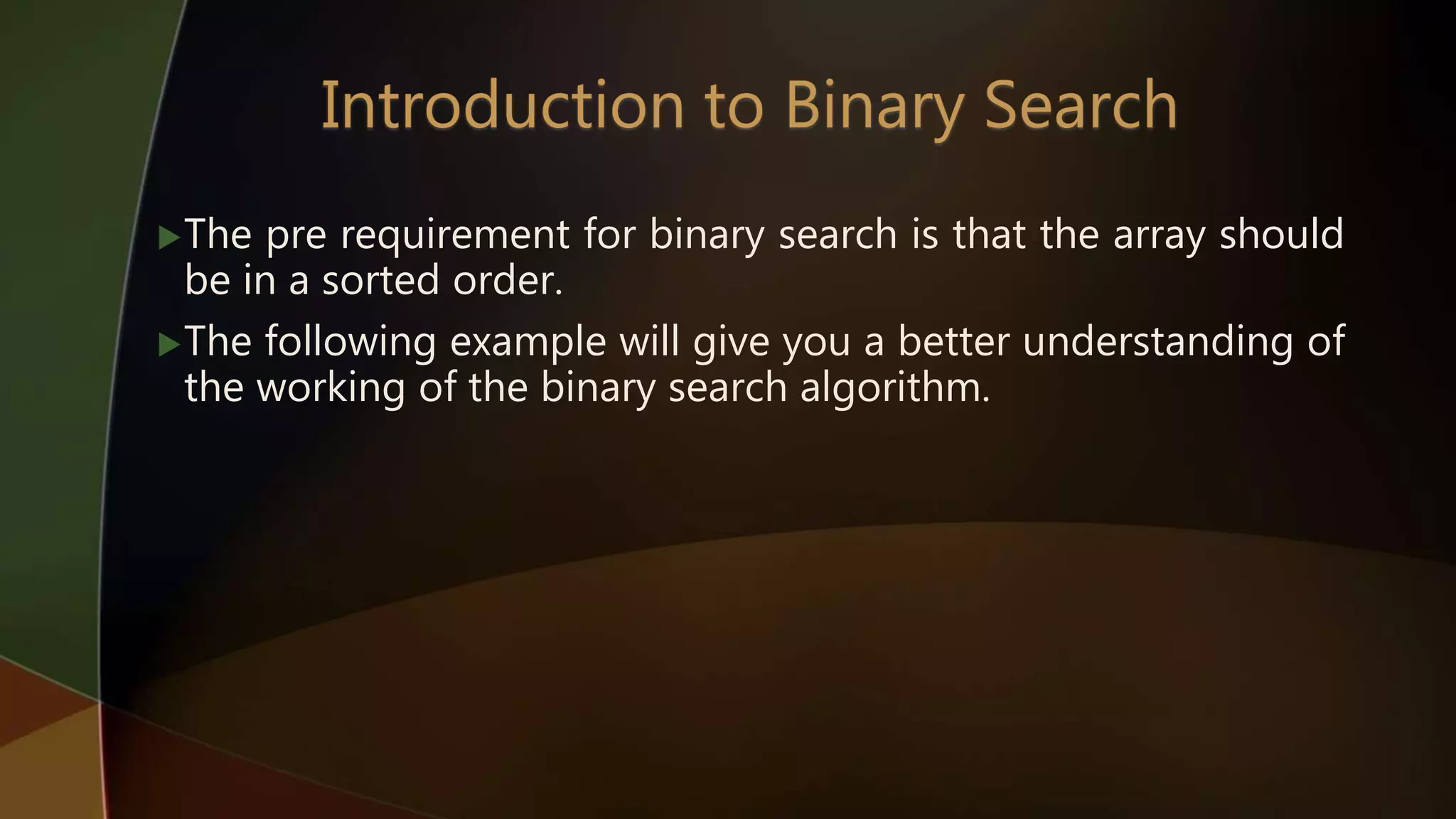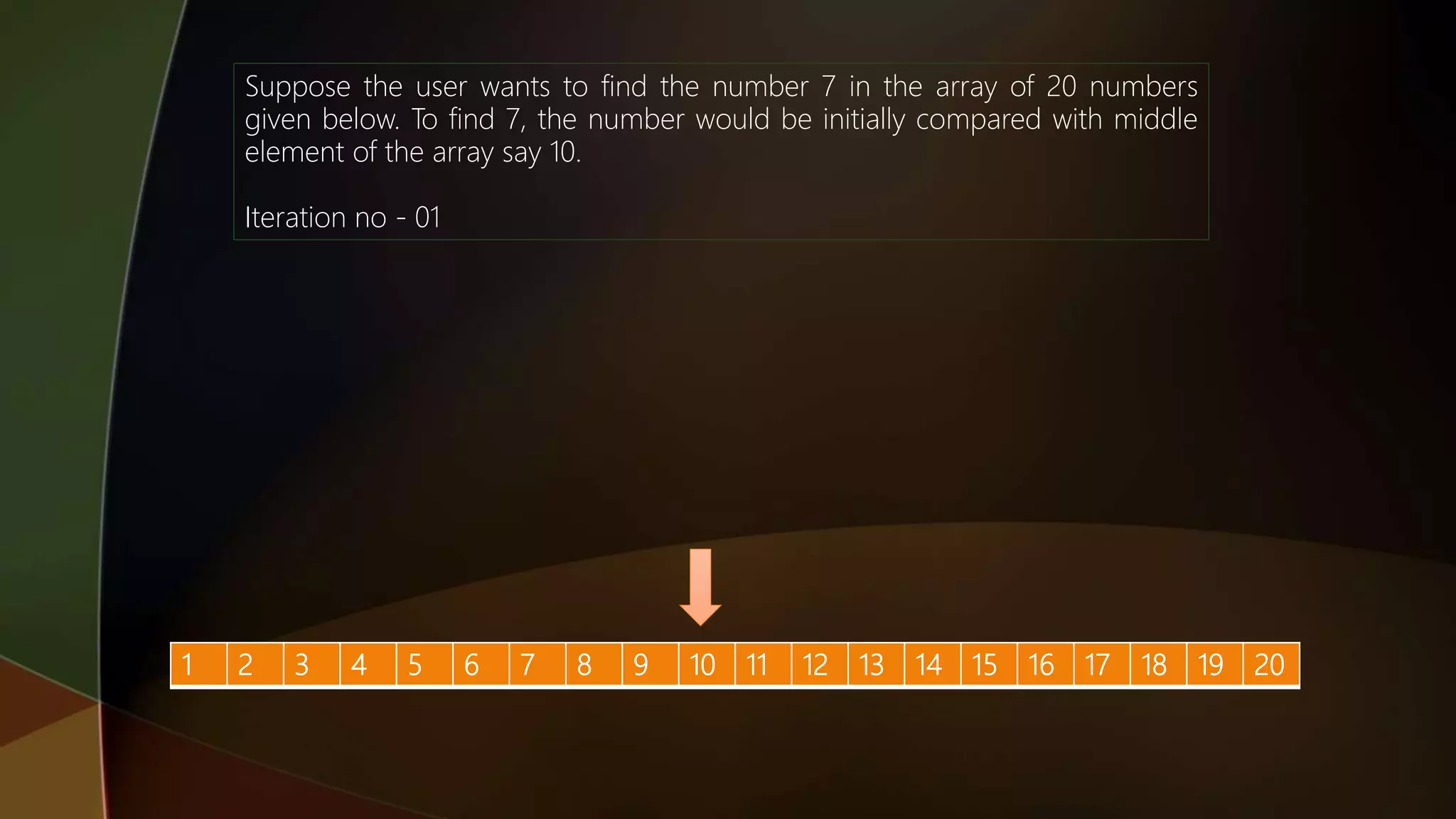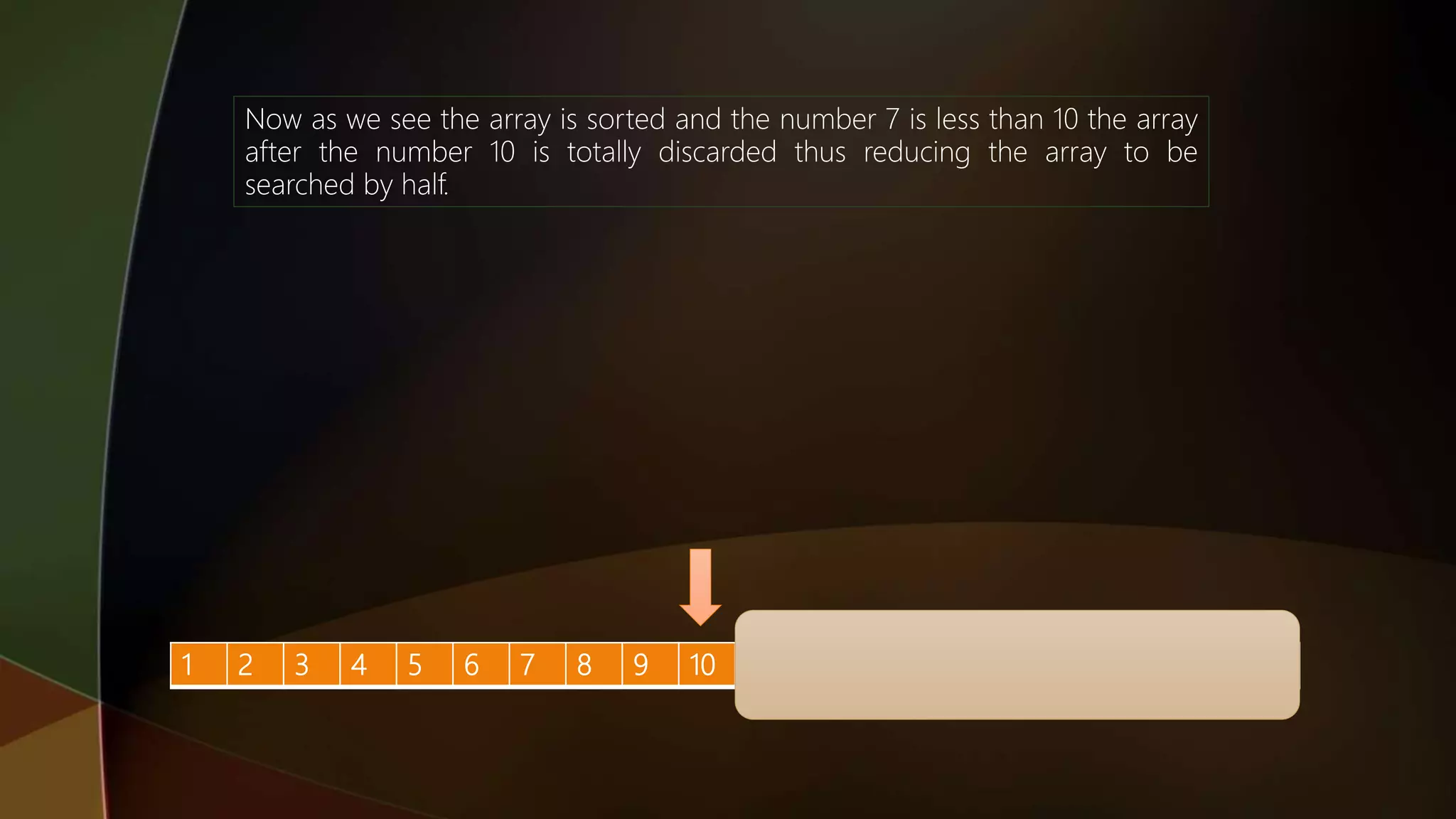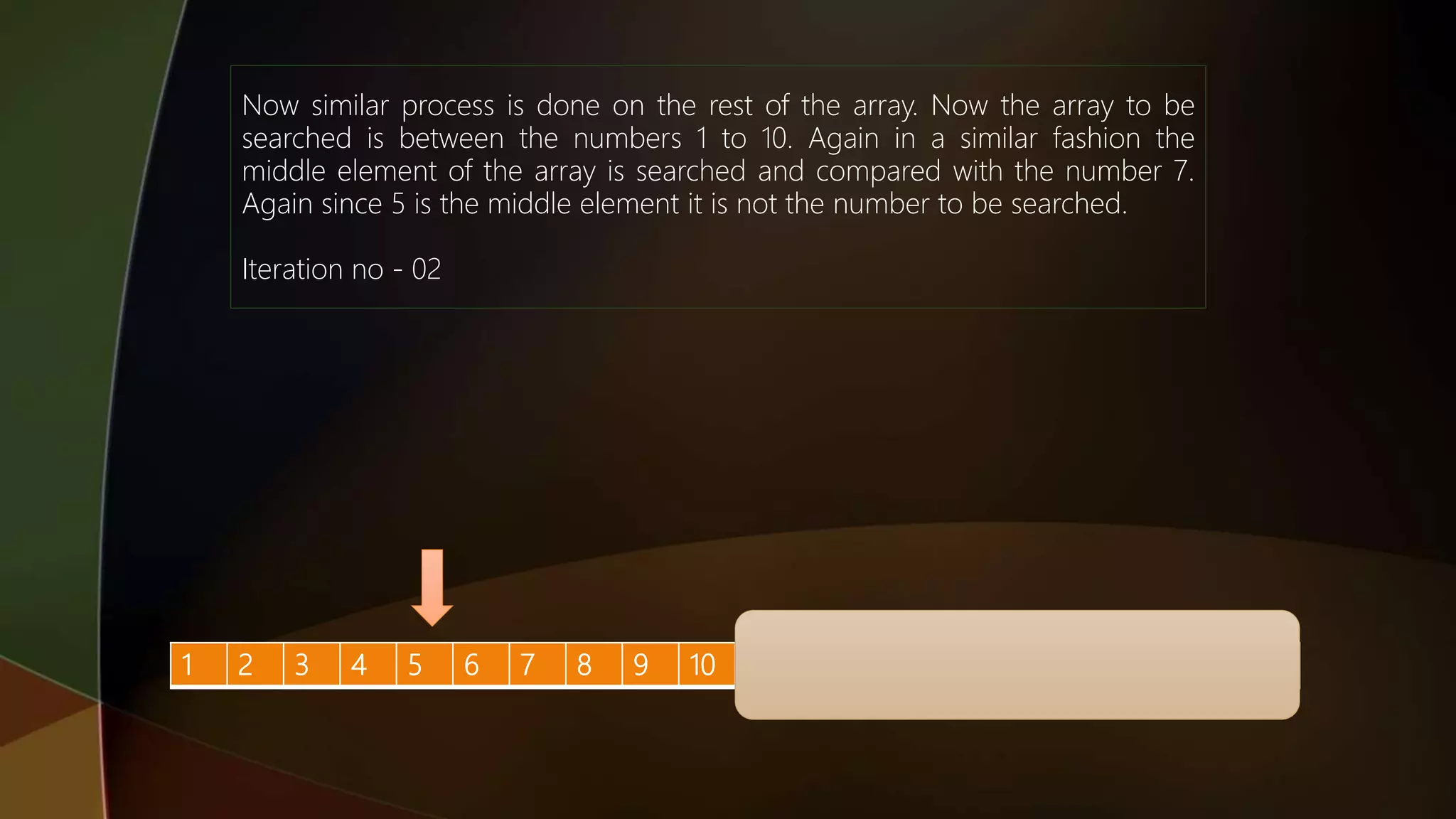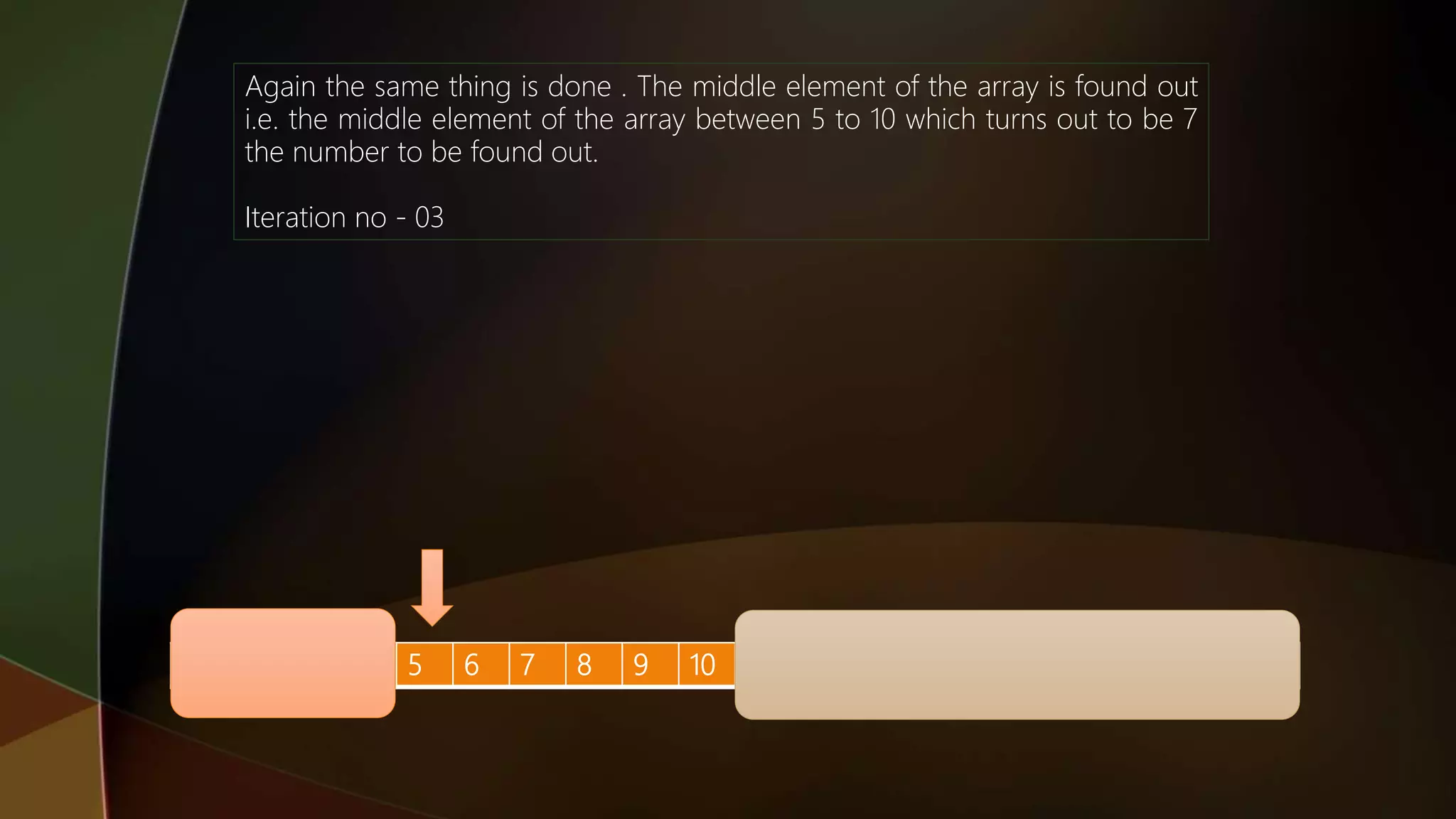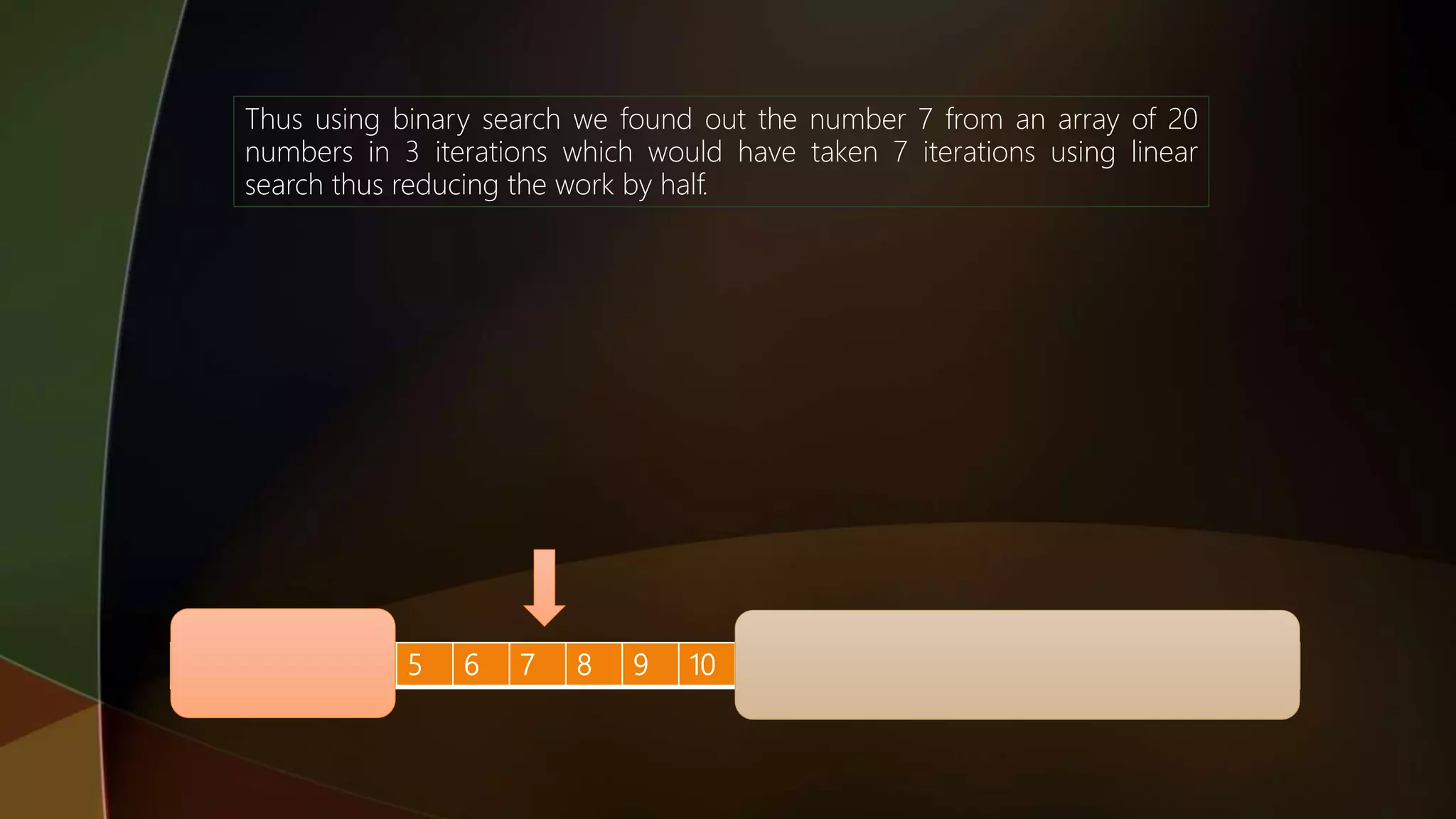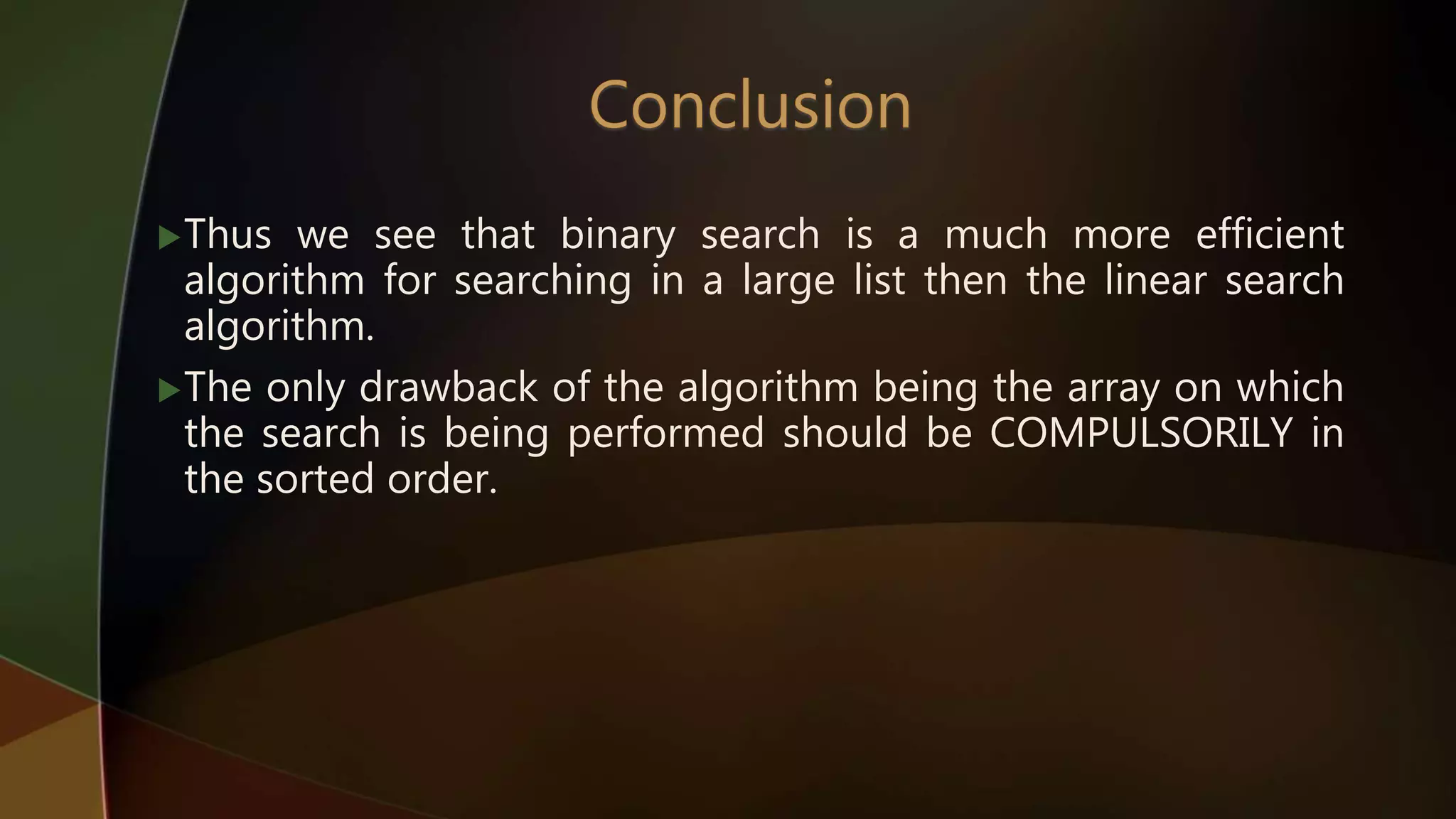The document discusses the drawbacks of linear search in large datasets, illustrating its inefficiency through examples. It introduces binary search as a more efficient algorithm that significantly reduces the number of iterations required for finding an element in a sorted array. However, it emphasizes that binary search can only be applied to sorted arrays, which is its main limitation.

![Now as most of you must be knowing a major drawback of
the linear search that it is extremely time consuming for large
data sets .
Consider for Example we have an array with only five numbers
[1,3,0,8,5] and we want to search the number 5 in the array.
Then the maximum time taken to search the array would be
basically five iterations.](https://image.slidesharecdn.com/binarysearch-160914144503/75/Binary-search-2-2048.jpg)
![However , consider a case where you have say 10,000
numbers in an array [i.e. numbers from 1 to 10000 in any
random fashion] and we want to search an element which is
the last number in the array.
Now as you can see here this is extremely time consuming as
it would take 10000 iterations to search the number.
This Is where we use binary search to speed up the operation
significantly.](https://image.slidesharecdn.com/binarysearch-160914144503/75/Binary-search-3-2048.jpg)
